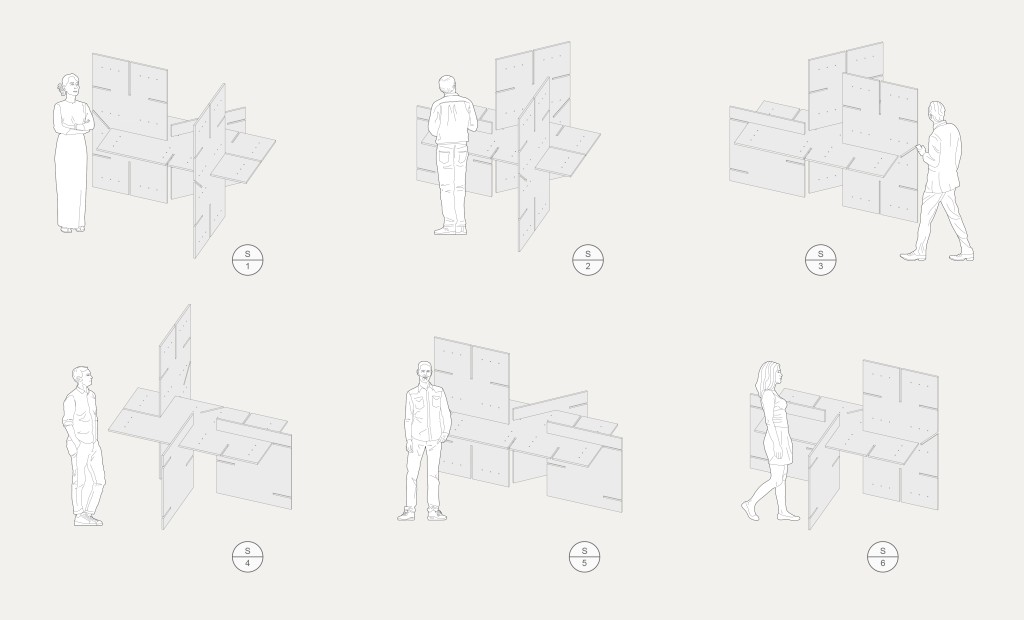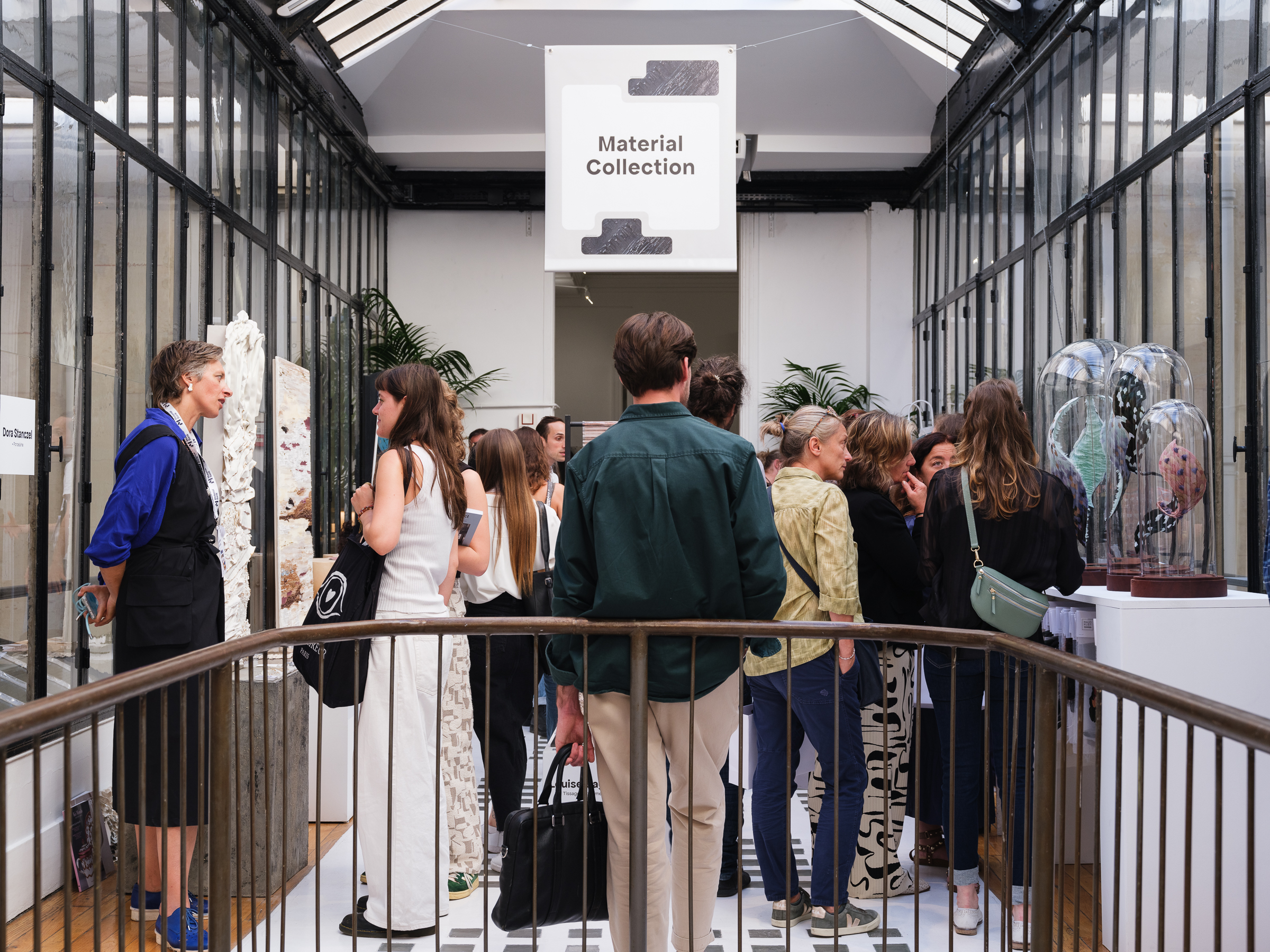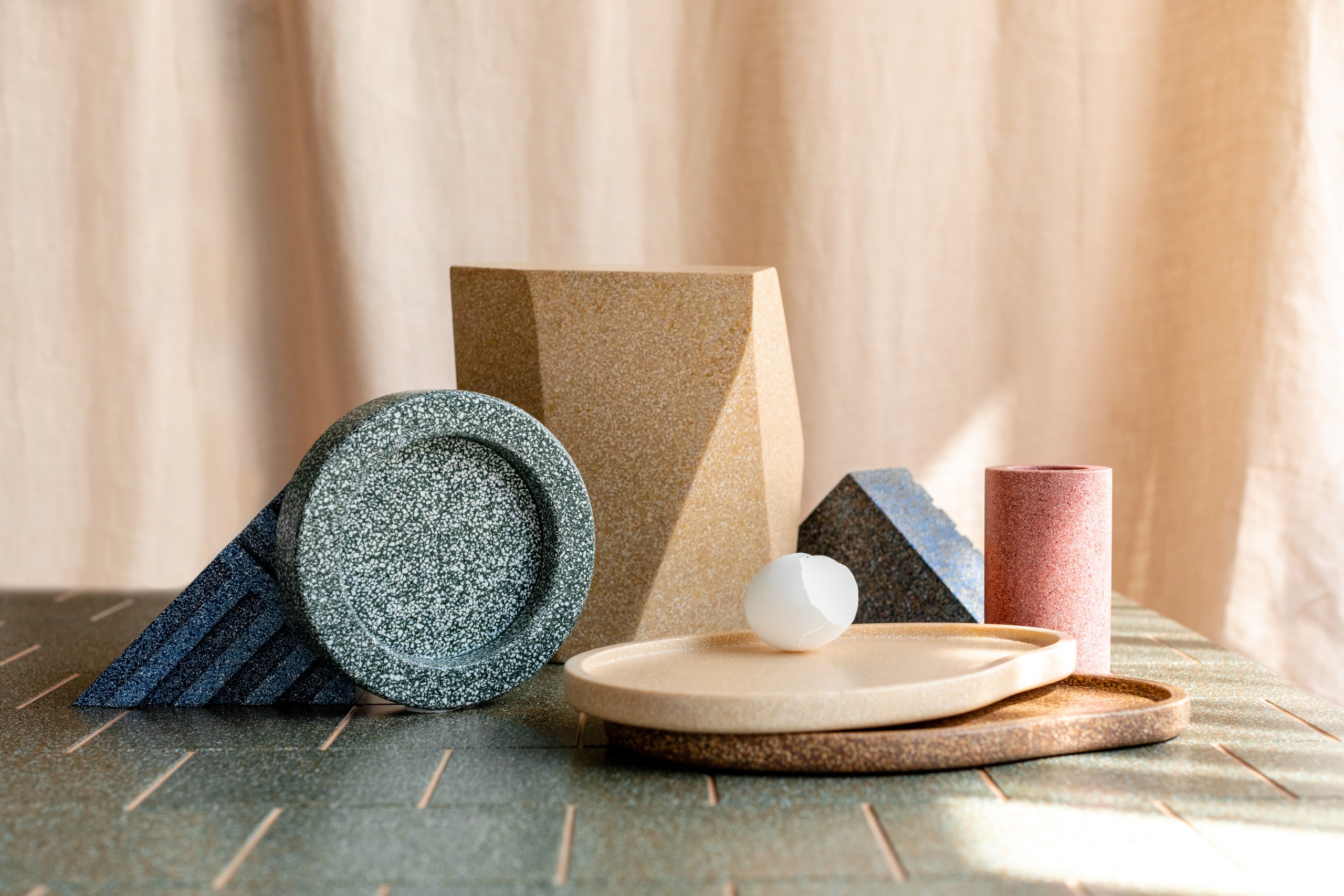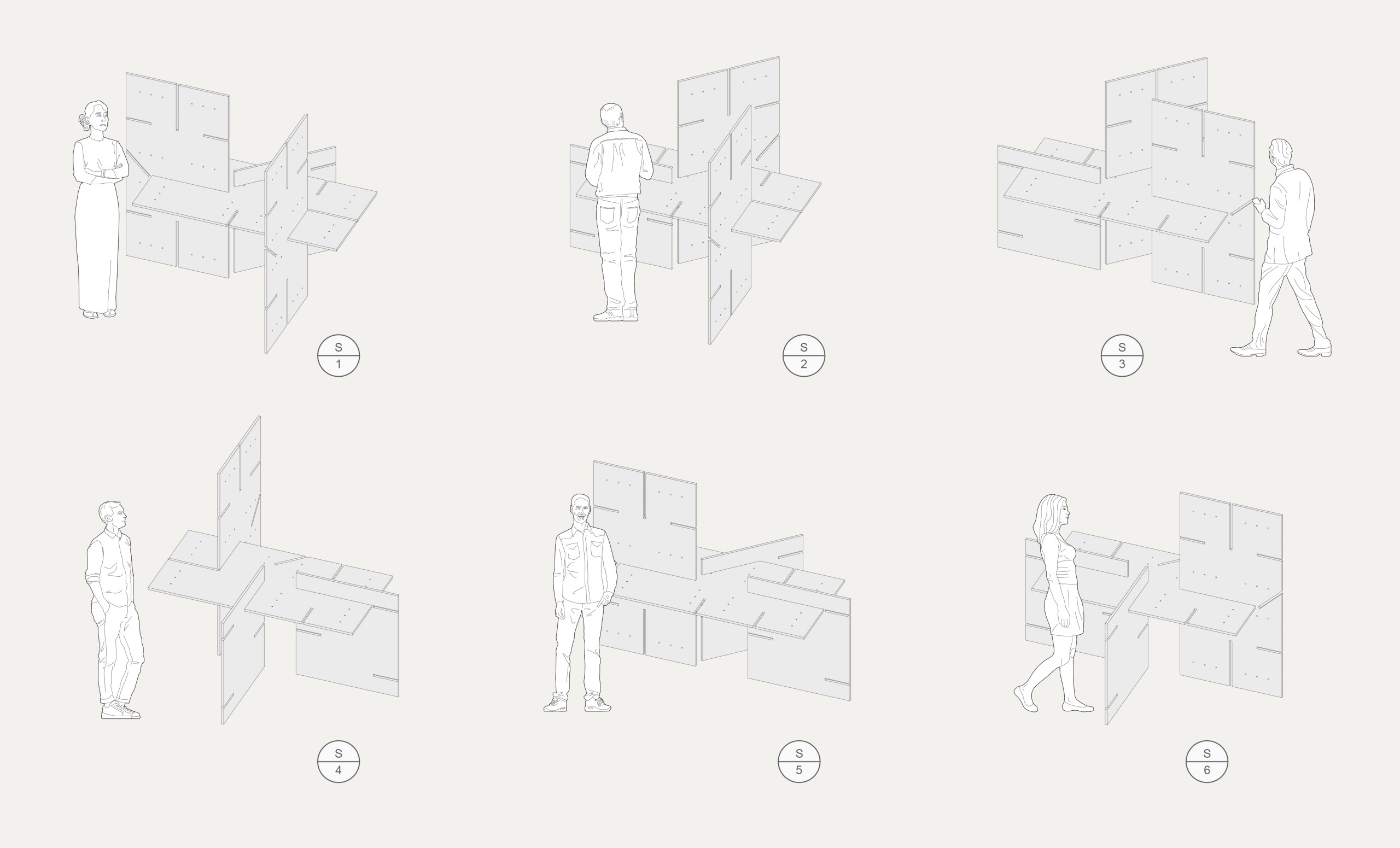In a few words, can you present your background and your work?
After joining MVRDV in 2006, I became a partner in the agency, responsible for French-speaking projects in France, Switzerland, Belgium, Monaco and Canada. Previously, I worked at the FGP studio (Ferrier, Gazeau, Paillard), at Jean Nouvel’s agency and also with the urban planners of the West 8 agency.
My international training began at ENSAP in Lille and continued at ETSA in La Coruna, then at the University of Technology in Eindhoven. This course allowed me to understand different approaches to the profession and to design.
What role did MVRDV play in the scenographic project for the 8th Rendez-vous de la Matière + fair(e)?
We worked in collaboration with the scenographer Sophia Goigoux-Becker. We were in continuous exchange in order to create exhibition stands that met the needs of the exhibitors. With Veronica van der Horst, designer at MVRDV, we worked in partnership with specialists from our teams who have been involved in ecological sustainability issues.
The stand, while not our core business, was a very interesting topic that we wanted to explore further in the spirit of innovation.
Did the knowledge that these stands would be installed in the Atelier Richelieu influence their design?
The site is magnificent, with beautiful volumes and a good height, and the interior is quite neutral. But the design of the stands went beyond the location. We imagined stands that can be adapted to various spaces and that are easily transportable, transposable and therefore reusable.
After all, we adopt a philosophy of sustainability. In this sense, the stands also fit in quite well with the products and ideals put forward by the exhibitors at the event.
How were the stands designed and what requirements did they meet?
We designed the module by trying to rethink the logic of the stand, the logistics and the compactness of its transport in order to limit carbon emissions and use recycled materials, which are therefore more sustainable.
We have worked with companies to develop a system of panels with standard sizes that allow a multitude of possible combinations. The stands are made up of modules, panels with beautiful dimensions of up to 180cm x 90cm, offering a catalogue of possibilities to exhibitors. The elements are very thin and interlocking. This allows exhibitors to choose the configuration they wish to put in place in relation to their product.
The modules can also be used to create furniture, such as chairs and benches. The logic is simple: we do not create one piece of furniture, but dozens. The exhibitors choose the furniture or composition that suits them. At Rendez-Vous De La Matière, there are about four panels per stand, which are easy to assemble and compose, and which offer each exhibitor the possibility of individualising and adapting their space.
The interest of the stand is therefore in its intrinsic use, but also in the catalogue logic created from a unique object, and finally in its sustainability and environmental impact.
How are these stands part of an eco-design approach?
We worked with the company Module Carré to limit waste and maximise transport.
The stands are light and can be dismantled, and the panel material they are made of is reusable. Once disassembled, the boards can be easily moved in a small volume, which minimises the carbon footprint associated with their transport.
We work with square boards measuring 2.80 m by 1.40 m from which we cut the panels. The primary objective is to make maximum use of the surface area of these boards to avoid wasting material. In order to optimise the cutting process, we have created five panels of three different sizes. The material from the offcuts of the notches is recovered to make hanging supports for the exhibitors.
What are the modules made of and how were they manufactured?
The boards are made of 100% recycled plastic and are 100% recyclable. The process follows a logic of circularity. The plastic is recovered and fragmented. Specific machines have been developed and certified to recycle up to 75% of the different types of plastic, using only renewable energy, thus producing 0 kg of CO2 emissions during production. Each panel is made from a single type of plastic, so it can be easily recycled, extending the use of this resource indefinitely. The effect of the resulting material in various colours is akin to plastic terrazzo. On request, it is also possible to choose special colours, depending on availability. But the randomness of the compositions is the charm of the product.
Text: Cléa Calderoni
Front page visual: 3D of the 2022 edition’s scenography © Sophia Goigoux-Becker




